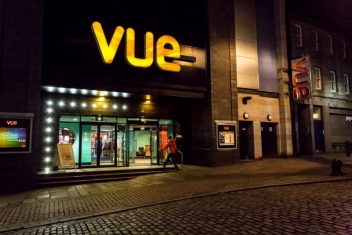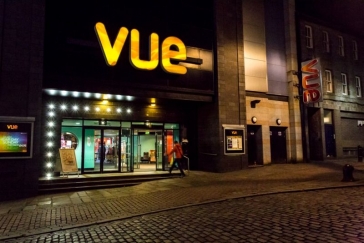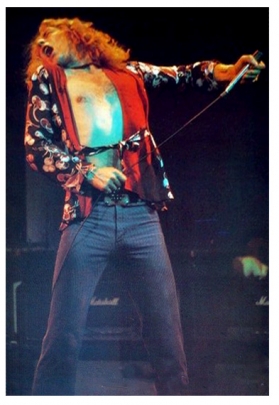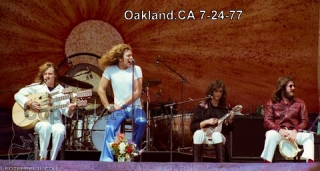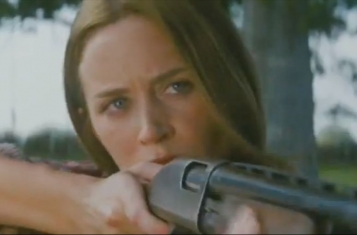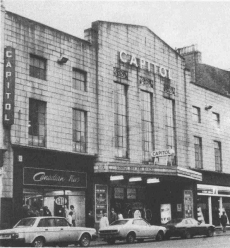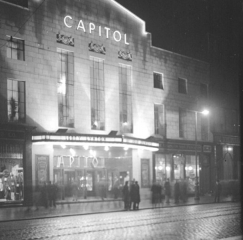As plans progress for a new 10 storey office block on the former Capitol cinema, Murray Henderson meets Charlie Davidson, an early member of the Aberdeen Theatre Organ Trust, who talks about his hopes for the legendary Compton Cinema Organ, still resident in the now derelict building.
During the Capitol’s spell as a nightclub, few clubbers could have known that beneath their feet lay an exquisite example of one of the most complex and beautiful musical instruments ever produced in Britain.
The mighty Compton Organ was sealed underneath the floor of the nightclub as a condition of planning approval to convert the cinema in 2002. It was built by master organ maker John Compton of Nottingham. His brand was the most popular in Britain, with a total of 261 organs installed in British theatres1.
Because of the silent nature of early cinema, it was left to virtuoso organists to provide the spine-tingling soundtracks to the era’s films. In its heyday the Capitol’s Compton was of some renown and organ performances in the theatre were even broadcast to the nation.
A previous planning application for the demolition of the Capitol auditorium was approved by Aberdeen Council and backed by Historic Scotland. Though the plans were not progressed, they included the display of the organ console alone, to be rendered unplayable, above the entrance as “a reminder of the original use of the building”2.
But that is not enough for former Trust member and Aberdeen-born organ maestro Charlie Davidson, who is intent on saving the entire instrument from the wrecking ball and ensuring that its unique sound can once again be heard in the city.
Aberdeen Voice (AV): Charlie, what is your association with the Capitol’s Compton Organ?
Charlie Davidson (CD): I was born and raised in Aberdeen, and studied organ at St Andrews Cathedral in King Street Aberdeen in the 1960s but also discovered there was a magical Pipe Organ in the Capitol at the same time. I was allowed in to play the Compton on Saturday mornings which was wonderful. This was about 1965 and the Compton in the Capitol was the first Cinema Pipe Organ I ever played. The Capitol Organ, and in fact the entire cinema, was a big part of my life.
AV: Can you describe the Compton and how it felt to play in the Capitol?
CD: The Compton was a wonderful instrument. The acoustics of the Capitol were great and the organ console was on an electric lift situated in the centre of the orchestra pit. It was a great thrill to push the ‘up’ button on the organ console whilst playing and you would be lifted up to stage level in full view of the audience.
AV: How does a Cinema Organ differ from a Church Organ, which people might be more familiar with?
CD: The mechanical side of the organ is very similar to some Church Organs but the stops, or ranks of pipes, are quite different. Because the Cinema Organ was originally designed to accompany silent films, its main purpose was to imitate an orchestra. Having said that, it can still sound like a Church Organ if required.
The technique required is quite different to Church Organ playing. In fact, you will find that practically all cinema organists can play the Church Organ, but few church organists can play the Cinema Organ. The percussions were a major part of this design.
The Capitol Organ has a xylophone, glockenspiel, cathedral chimes, vibraphone and a full set of drums, cymbals and sound effects. The effects are operated by buttons above the pedals and consist of things like horses’ hooves, bells, buzzers, car horns, sirens, etc. – all great fun.
AV: It sounds like a very complex instrument.
CD: The organ is not just the console in the pit; it also has a massive blower in the basement and two rooms full of organ pipes and percussion instruments half way up the proscenium arch on the right hand side. There are also miles and miles of cables and relays etc. Restoration is a big job and I should know as I have removed several of these instruments over the years. The last one was in Mallorca this year.
AV: Can you tell us more about your previous restoration work?
CD: Another of the organs I rescued was from the Rex Cinema in Stratford, east London. This organ has now been fully restored by a team of enthusiasts in the Royalty Theatre in Bowness on Windermere and had its opening on the 6th October3. In addition, I have the unique Ingram Organ from the Astoria Corstorphine in storage and also a fine Wurlitzer Pipe Organ from the Ritz Workington.
AV: I understand the Capitol Compton was broadcast.
CD: Yes, the Capitol organ was broadcast many times on the BBC. We had lots of famous resident organists including Rowland Timms, George Blackmore, Bobby Pagan and others – all of whom broadcast regularly. The Capitol was very well known to the UK BBC audience.
AV: There seem to be a number of different Compton designs, do you know if the Capitol’s Compton was unique, designed especially for the cinema?
CD: There were many designs of organ console. The Capitol console was unusual but not unique. The art deco end boxes are known as ‘coffin ends’ for obvious reasons and are really just for show, to make the organ look more impressive as it rose out of the pit in the spotlight.
AV: Do you have any idea of how rare these instruments are nowadays?
CD: There are now only four Cinema Pipe Organs left in Scotland – the Capitol Compton, a very fine restored Wurlitzer in Glasgow, a Hilsdon organ in Greenlaw (ex Playhouse Edinburgh) and a Compton under restoration in the Heritage Centre Coatbridge. To the best of my knowledge, these are the only Cinema Pipe Organs left in all of Scotland. The Capitol Organ was a particularly good instrument as was the one in the Astoria Aberdeen.
AV: What became of the Aberdeen Astoria Organ?
CD: It was rescued and installed in the hall of Powis Academy. In November 1982, an arson attack by a pupil destroyed parts of the school including the organ. It had a glass surround and organ bench and the organist could change the colour of the entire lighted console at the flick of a stop. It could also be set to ‘auto’ and gently fade through all the colours of the rainbow. These illuminated consoles were known as ‘jelly moulds’ again for obvious reasons. They were unique to the UK which I always found surprising. The American Cinema Organs never had anything like it.
AV: How did you learn the skills necessary to restore Cinema Organs?
CD: Sheer trial and error. I bought my first pipe organ from Letterfourie House in Buckie when I was 14 years old and completely rebuilt it. It was a really historic organ and is still going strong with a local organ builder. It just went on from there and I got interested in the mechanics of Pipe Organs. The restoration encompasses woodwork, electrical, relays, etc. which I love and you end up with something you can play.
AV: In your opinion is the Compton Organ in the Capitol restorable?
CD: The Capitol Compton organ is most certainly restorable. It will require a lot of work, but it is such an important piece of Aberdeen’s history it really has to be done.
References:
1. http://en.wikipedia.org/wiki/John_Compton_(organ_builder)
2. Aberdeen City Council Approval Notice for Planning Application (P101757) searchable on ACC website. Current Capitol Planning application is (P101757).
3. http://www.bbc.co.uk/news/uk-england-cumbria-19270424
Comments enabled – see comments box below. Note, all comments will be moderated.

